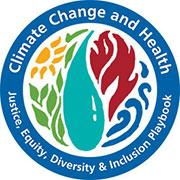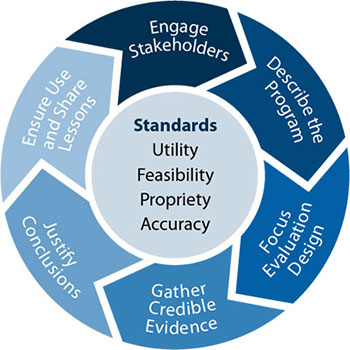 Incorporating evaluation to document and improve climate and health adaptation efforts
Incorporating evaluation to document and improve climate and health adaptation efforts
The last step of the BRACE process is evaluation and improvement. Though it is technically the last step of BRACE, it is a crucial aspect to consider throughout the steps. Evaluation* can provide needed insight all along the way about the viability, acceptability, functioning, and effectiveness of a program.
Evaluative thinking is an ongoing and iterative process that can generate inquisitive and an open-minded approach to program implementation. This is especially important for upstream-focused programs trying to change fundamental drivers of health outcomes or achieve health equity. Evaluation can be a critical tool for generating buy-in, cultivating a culture of transparency, building trust with communities, and demonstrating that your actions are working.
 An important first step is to use an existing framework for evaluation, which can help break down a complex and potentially overwhelming process into simpler steps.
An important first step is to use an existing framework for evaluation, which can help break down a complex and potentially overwhelming process into simpler steps.
One public health-oriented tool is the CDC Framework for Program Evaluation.
This is a flexible, non-prescriptive 6-step guide, designed to summarize and organize essential elements of program evaluation for public health practitioners.
Using this framework can be a driving force for planning effective climate adaptation strategies, improving ongoing work, and demonstrating the results of your investments.